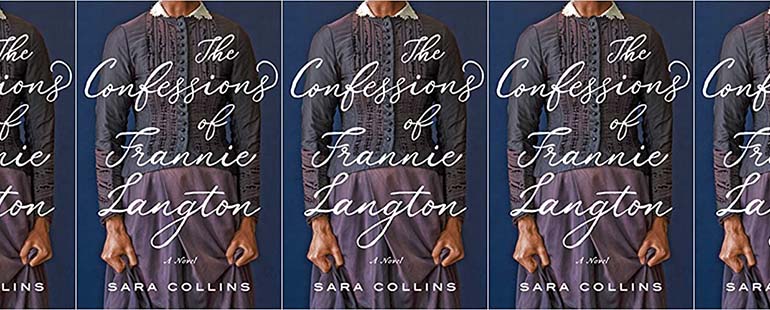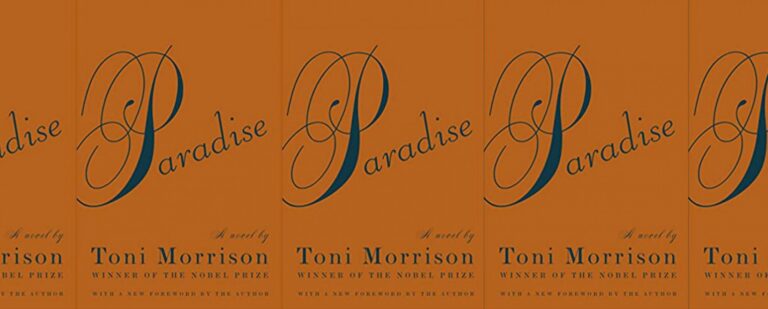The Confessions of Frannie Langton’s Complication of the Gothic Voice

“Reader, I married him.” This line, from the final chapter of Jane Eyre, encapsulates what I have come to think of as the nineteenth-century British gothic voice. In less than five words, Jane vindicates her decision to marry Rochester, her erstwhile employer who until recently kept an insane, Creole wife locked in his attic. Jane’s ability to proudly claim what could have easily become a social and moral disaster from the perspectives of her nineteenth-century audience is predicated on the novel’s careful employment of narrative voice to first establish her character and later examine the psychological motivations behind the decisions that lead to her unusual but well-deserved reunion with Rochester.
Understanding the gothic voice requires an understanding of the literary gothic itself, a notoriously slippery genre reliant on emotions and atmosphere more than tropes of plot, setting, or character. This atmosphere, according to author Sarah Perry, can be summed up as “too large, too impolite, too ill-mannered; seeming both to enlarge the reader’s imagination and to speak to their most concealed and furtive desires.” These outsize emotions and desires conflict beautifully with the obsessive concern for propriety the Victorian age is known for, creating enduring works of literature like Jane Eyre, Wuthering Heights, and Dracula. It’s by examining these conflicts, and the similar one that takes place between the conventions of the nineteenth-century gothic and its modern descendant, that Sara Collins’s 2019 novel, The Confessions of Frannie Langton, emerges as a premier example of the limitations and flexibilities inherent to the gothic voice.
Since gothic literature deals with what is frowned upon and forbidden, but also deeply desired, nineteenth-century authors like Brontë are careful to create heroines who adhere to a code of conduct that, even if not conventional, is shown to be undoubtedly moral. Marking this code as legitimate and deserving of sympathy is the behavior of the gothic heroine, whose virtue and identification with a white, European audience enables her to garner reader empathy and understanding through her narration of her tale. Essentially, the gothic voice balances scandalous situations and illicit desires with a protagonist who is able to navigate these challenges to propriety through their identity as a societally acceptable hero or heroine.
The Confessions of Frannie Langton immediately disputes this structure by forefronting a narrator who conspicuously fails to meet those qualities. Told by a former slave on trial for the brutal murder of her employer and his wife, who she professes to be in love with, the novel demonstrates the barriers of status, race, and sexuality preventing Frannie from finding the audience that could save her life, while also doing considerable work to break those barriers.
From the beginning, Frannie has little expectation of her account finding an understanding audience. The novel is framed as a written confession sent to the lawyer tasked with defending her in the trial for the murder of Mr. and Mrs. Benham, but the confession is periodically interrupted by newspaper articles, courtroom interviews, and occasionally Frannie’s unfiltered stream of consciousness. “[T]hey want me to confess,” she thinks in the inner monologue that opens the novel. “But how can I confess what I don’t believe I’ve done?”
She resists the urge to pen a repentant prison confession, but her background as a former plantation slave in a country torn apart by vicious debates on slavery and abolition not only prejudices the courtroom against her—it also muddles Frannie’s own understanding of herself and her motivations. A bright and curious child, she was taught to read by her owner’s wife. The spite behind this act becomes obvious when her learning singles her out for notice by her owner, Langton, who takes advantage of her intellect and talents by having Frannie assist him in brutal experiments to prove the genetic superiority of whites.
Frannie is aware that she had little say in the matter and admits that she “was Langton’s creature,” but she also refuses to fully surrender her free will: “there are numberless choices between lying down or putting up a fight.” The deep ambiguity that she voices in her account cannot help Frannie change the minds of those convinced of her guilt, or make allies of the abolitionists equally convinced that her history left her unable to make her own decisions or judge their morality. Far from the conviction shown by gothic heroines like Jane Eyre, Frannie is torn between a belief in the power of her personal choices and the circumstances that forced her to witness and commit atrocities. This conflict causes her to doubt her own innocence even as she continues to insist that she would never hurt Marguerite Benham, destabilizing her narrative and making a clear-cut argument for her condemnation or acquittal impossible.
The destabilization doesn’t simply affect the way Frannie is viewed at her trial. On a level of genre and structure, it disrupts the gothic voice, showing how factors such as race, class, and sexuality can throw a heroine’s credibility and morality into question. For it is not only Frannie’s actions that are on trial but also the love she claims to have for Marguerite Benham. In its insistence that their relationship was motivated by vengeance on Frannie’s part and coercion and fear on Marguerite’s, the prosecution demonstrates that the trial audience is more than willing to frame the affair as monstrous and predatory rather than acknowledge or grapple with the complexities of a Black lady’s maid carrying out a relationship with her white mistress. It is far easier to blame the entire thing on something inherent in Frannie’s heritage and upbringing—”You’ve been made savage,” as the prosecuting attorney insists. The complacency of the trial audience also extends to the readership of Frannie’s written confession. Her lawyer, to whom the bulk of the novel is addressed, claims that even if their love “had been mutual, it is more likely to harm than help your case.”
For her part, Frannie is keenly aware of her unpalatableness to a British audience, whether they are of a slaveholding or an abolitionist persuasion. “[T]he slave tales we print shed light on suffering,” a man eager to become her biographer tells her, but Frannie refuses to commodify her history and turn it into something easily digestible to a white audience. To her, “good-doers” like the man are just as exploitative as Langton and his experiments, “sniffing at the carcass of slavery, craving always to hear the worst thing.” They are more interested in the degradation of human beings than in truly trying to understand them. Frannie’s musings on the narratorial politics of slavery narratives dovetail with the novel’s examinations of the gothic voice and its assumptions of a white European audience who may be asked to empathize with behavior they may find objectionable but cannot be expected to understand those they have othered.
The limitations of Frannie’s confession—its audience, the expectations it fights against, and her determination to tell her story truthfully, despite the repercussions—lead to her conviction in the murders, and also demonstrate how the conventions of the gothic voice fail her. It’s a sobering thought that nevertheless paves the way for a critical examination of gothic conceptions of race and homosexuality and also allows Frannie a bittersweet reckoning, where she is able to articulate her love for Marguerite without the pressure of an outside audience. In a final stream-of-consciousness passage that closes the novel, she waits at the gallows, knowing her future and freed, finally, of the burden of proving her innocence. Her voice shifts from addressing her frantic lawyer and an unsympathetic crowd to calling out to Marguerite. “I am afraid,” she admits. “But the mind is a different place, and there . . . we will have days together.” Breaking free from the strictures of her written account, she is able to find solace and hope.
The optimism of this conclusion may be muted, but it’s undeniable that Frannie is able to hold on to the earnestness and emotional honesty she craved, no matter the cost. In the process, the novel tests and even breaks the boundaries of the gothic voice, showing that a heroine standing on the outside of literary tradition can still inhabit the gothic and push it to new and provocative directions. Frannie joins the canon of nineteenth-century gothic heroines and their descendants with her greatest triumph—a courageous and honest heart—lighting the way for further challenges and innovations in this most fascinating and frustrating of genres.


